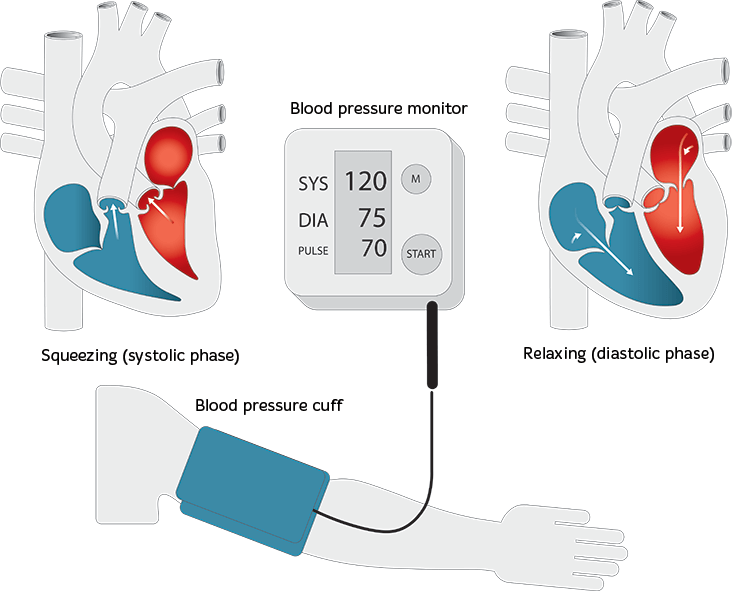Biolight WBP302 Blood Pressure Monitor with APP
The Biolight WBP302 is a new offering from Medspares, its an affordable and relaible automatic blood pressure monitor for home use. APP ready
APP available for charting iOS/Android
Standard Kit:
Main Unit
USB/Alkaline operation
Adult Cuff 22-32cm
Backlit 5″ LDC Screen
Integrated cuff holder (on rear)
Measurement time: 20-45 Seconds
Optional:
Child Cuff
Large Adult Cuff
Description
Biolight WBP302 blood pressure monitor
Systolic pressure range: 30mmHg ~ 255mmHg (4.0kPa ~ 34.0kPa)
Diastolic pressure range: 10 mmHg ~ 220mmHg (1.3kPa~29.3kPa)
Cuff display range: 0mmHg~300mmHg
Pressure Range: Static ±3mmHg; clinical:
Average error: ± 5 mmHg
Standard bypass: ≤ 8 mmHg
HR accuracy range: 40 bpm~240 bpm, ±5mmHg or ±3mmHg according to the largest Blood pressure
Unit: mmHg or kPa
Protection against deletion software: 295± 5 mmHg
Search:
Sphyg Digital Sphyg Sphygmmamometer Blood Pressure Monitor
Home health
Blood pressure
Blood pressure (BP) is the pressure of circulating blood against the walls of blood vessels. Most of this pressure results from the heart pumping blood through the circulatory system. When used without qualification, the term “blood pressure” refers to the pressure in the large arteries. Blood pressure is usually expressed in terms of the systolic pressure (maximum pressure during one heartbeat) over diastolic pressure (minimum pressure between two heartbeats) in the cardiac cycle. It is measured in millimeters of mercury (mmHg) above the surrounding atmospheric pressure.
Blood pressure is one of the vital signs—together with respiratory rate, heart rate, oxygen saturation, and body temperature—that healthcare professionals use in evaluating a patient’s health. Normal resting blood pressure, in an adult is approximately 120 millimetres of mercury (16 kPa) systolic over 80 millimetres of mercury (11 kPa) diastolic, denoted as “120/80 mmHg”. Globally, the average blood pressure, age standardized, has remained about the same since 1975 to the present, at approx. 127/79 mmHg in men and 122/77 mmHg in women, although these average data mask significantly diverging regional trends.[1]
How is blood pressure measured?
C/- https://www.heartfoundation.org.nz/
Blood pressure is measured using a machine called a blood pressure monitor.
A cuff (thick band) is put over your arm. This cuff is attached to a machine which measures the pressure inside your arteries. When the machine is switched on the cuff tightens and then slowly loosens again. It is quick and painless. At the end, the machine will give a blood pressure reading.
Blood pressure is measured in millimetres of mercury (which is written as mmHg).
A blood pressure reading contains two numbers and will be written as a figure like 120/75 (this is said as ‘120 over 75’.)
The first (top) number is the pressure when your heart beats (systolic pressure). The second (bottom) number is when your heart relaxes (diastolic pressure).

During a blood pressure test, a blood pressure cuff is wrapped around your arm so a blood pressure monitor can measure your systolic and diastolic blood pressure.
Where do I get my blood pressure tested?
You can get a blood pressure reading at your GP practice and at most local pharmacies. You may also choose to have a blood pressure monitor at home.
What is a normal blood pressure reading?
For most people an ideal blood pressure is 120/75, or lower.
However, the blood pressure that is ‘ideal’ for you depends on many factors, including your overall risk of heart attack and stroke.
If you’re already on high blood pressure medication, your ideal blood pressure will be 130/80 or below.
What is high blood pressure (hypertension)?
High blood pressure is when your blood pressure is regularly higher than recommended levels. The clinical term for this is hypertension.
A single high blood pressure reading doesn’t necessarily mean you have hypertension.
You have hypertension if your blood pressure stays high for three separate readings, on three separate occasions, over at least three months.
Sometimes people’s blood pressure goes up because they’re worried about having it taken by the nurse or doctor. If this is a problem, the doctor may get you to do blood pressure readings at home or order a 24-hour monitor to help confirm you have high blood pressure.
Home blood pressure monitoring
Some people buy their own blood pressure monitor to use at home. This means you can measure your blood pressure on an ongoing basis.
The blood pressure readings you do at home are as good as those done by your doctor.
If you decide to buy one, it’s important to get the correct cuff size. If the cuff is too big or too small, it can give an inaccurate reading.
If you take your own blood pressure and get an unusually high reading, take it a second time after at least five minutes. If it’s still high and you’re worried, contact your nurse or GP.
Additional information
| Weight | 5 kg |
|---|
Recommended products
Nothing found.


